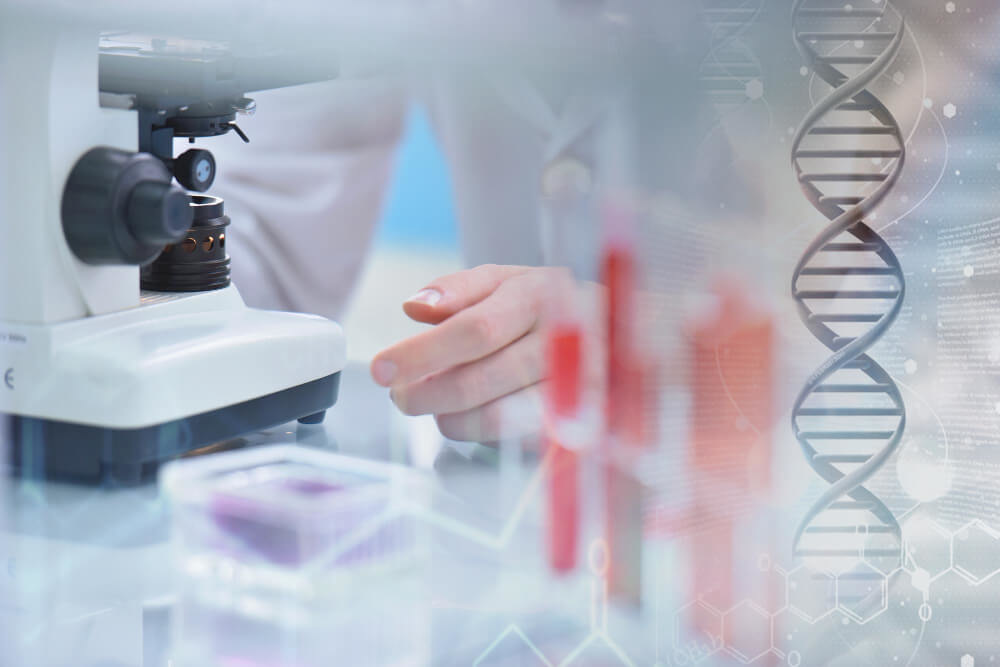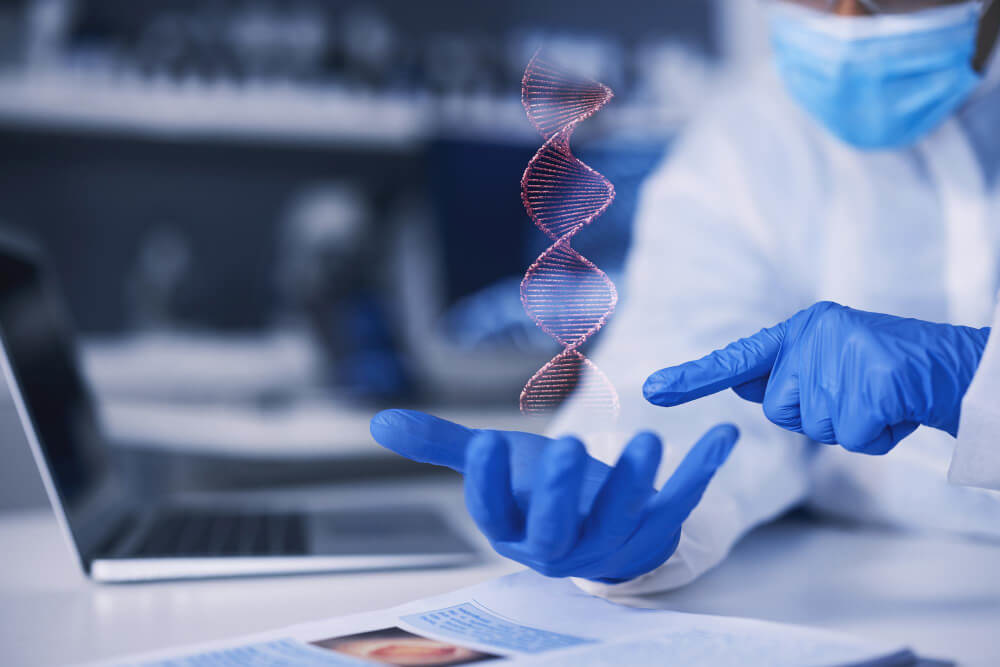Unlocking Your Body’s Healing Power: The Regenerative Medicine Revolution
Imagine your body as a remarkable, self-repairing machine. When you get a paper cut, your skin magically mends itself. When a bone fractures, it knits back together. This innate ability to heal is one of the most incredible aspects of human biology, a silent process we often take for granted until it slows or falters.
Now, what if we could harness and amplify this natural healing power? What if we could direct it with precision to repair damage caused by injury, disease, or the simple passage of time? This is the revolutionary promise of a field that is reshaping the future of healthcare. It represents a fundamental shift from merely managing symptoms to actively restoring function, and it is all centered on the incredible potential already locked within your own cells.
This exciting frontier is known as regenerative medicine. It is not a single treatment but a broad, interdisciplinary field dedicated to repairing, replacing, or regenerating human cells, tissues, or organs to restore normal function. This guide will explore the core principles of this approach, delve into its most common therapies, and look at what the future holds for this transformative area of science and medicine.

What Exactly Is Regenerative Medicine?
This field represents a paradigm shift in medical thinking. For much of modern history, medicine has focused on managing diseases with pharmaceuticals or removing damaged parts through surgery. While these methods are lifesaving, they often address the symptoms rather than the root cause of the problem. A pill might lower your blood pressure, but it doesn’t repair the underlying damage to your blood vessels.
Regenerative medicine takes a different approach. Its primary goal is to prompt the body to heal itself from the inside out. Instead of introducing foreign substances or simply cutting away a problem, it leverages the body’s own biological materials and intricate repair mechanisms. The aim is to fix the source of the issue, not just mask its effects.
Think of it like restoring a historic building. One approach is to patch the cracks and paint over the damage, making it look better temporarily. The regenerative approach is to bring in master craftspeople who use the original types of stone and wood to rebuild the crumbling sections, making the structure strong and whole again. This field seeks to do the same for the human body.
The ultimate vision is to find ways to cure conditions that are currently considered chronic or untreatable. By encouraging damaged tissues to regenerate, practitioners hope to restore health and vitality in a way that was once the stuff of science fiction. It is a proactive, restorative approach to wellness.

What Are the Core Principles Guiding This Field?
To understand regenerative therapies, we first need to appreciate the biological foundation they are built upon. The entire field is based on principles of cellular biology, growth factors, and the body’s innate capacity for renewal. It is not about inventing a new way to heal but about understanding and optimizing the one we were born with.

How Does the Body Heal Itself Naturally?
Every moment of every day, your body is engaged in a constant process of maintenance and repair. This is orchestrated by a complex network of cells and signaling molecules. When tissue is injured, your body initiates a sophisticated inflammatory and healing cascade. Platelets rush to the site to form a clot, releasing chemical signals that act like emergency flares.
These signals call other specialized cells to the area, including immune cells to clear away debris and stem cells that can help rebuild the damaged structures. These cells release proteins called growth factors, which are like tiny foremen on a construction site. They instruct cells to multiply, form new blood vessels, and produce the collagen and other materials needed to create new, healthy tissue.
This natural process is incredibly effective for minor injuries. However, with severe trauma, chronic disease, or the effects of aging, this system can become overwhelmed or less efficient. The supply of repair cells may be insufficient, or the signaling process can go awry, leading to incomplete healing, chronic inflammation, and the formation of scar tissue instead of functional tissue.

How Does Regenerative Medicine Enhance This Process?
Regenerative medicine works by giving this natural healing system a powerful boost. It is like sending in a highly trained special forces team with superior equipment to support the local police force. The goal is to deliver a high concentration of the body’s key healing components directly to the site of injury or degeneration.
This is achieved by isolating and concentrating specific biological materials, such as stem cells, platelets, or growth factors, and reintroducing them to the area that needs repair. By providing a rich supply of these regenerative elements, therapies can help overcome the body’s limitations. They can quiet excessive inflammation, stimulate more robust cellular activity, and guide the formation of healthy, functional tissue.
The therapies are designed to work with your body, not against it. They provide the raw materials and instructions the body needs to do what it does best: heal. This collaborative approach is what makes the field so promising for a wide range of conditions that have historically been very difficult to treat effectively.

What Are the Key Therapies Involved?
The field of regenerative medicine encompasses several different techniques and technologies. While some are still in the experimental stages, others have become well-established in clinical practice for specific conditions. These therapies often use a patient’s own biological material, which significantly reduces the risk of rejection or adverse reactions.

What is Stem Cell Therapy?
Stem cells are perhaps the most famous component of regenerative medicine. These are unique cells that have the remarkable potential to develop into many different cell types in the body. They serve as the body’s internal repair system, dividing essentially without limit to replenish other cells as long as the person is still alive.
There are different types of stem cells, but the ones most commonly used in clinical regenerative therapies are adult stem cells, particularly mesenchymal stem cells (MSCs). These can be harvested from a patient’s own bone marrow or adipose (fat) tissue. Once collected, they are concentrated and then injected into the damaged area, such as an arthritic knee or an injured tendon.
The power of stem cells is not just in their ability to become new tissue cells. A primary way they work is by acting as powerful signaling centers. They release a host of growth factors and anti-inflammatory molecules that orchestrate the healing environment. They can calm chronic inflammation, protect existing cells from further damage, and recruit the body’s own local repair cells to get to work.

How Does Platelet-Rich Plasma (PRP) Therapy Work?
Platelet-Rich Plasma, or PRP, is another cornerstone of regenerative treatment. It is a therapy that uses the healing power of a patient’s own blood platelets. Platelets are cell fragments in our blood best known for their role in clotting, but they are also tiny storehouses of hundreds of potent growth factors.
The procedure is straightforward. A small amount of blood is drawn from the patient, similar to a routine blood test. This blood is then placed in a centrifuge, a machine that spins at high speed to separate the blood into its different components. This process isolates and concentrates the platelets, creating a plasma that is many times richer in platelets and growth factors than normal blood.
This platelet-rich plasma is then carefully injected into the site of injury. For an athlete with a tendon injury, it would be injected into the damaged tendon. For someone experiencing hair loss, it is injected into the scalp. The concentrated burst of growth factors stimulates the body’s repair mechanisms, accelerating healing, promoting tissue regeneration, and reducing pain.

What Should We Know About Exosome Therapy?
One of the most exciting areas of research right now involves even smaller components called exosomes. For a long time, scientists thought these were just cellular waste products. We now know that exosomes are microscopic vesicles, or tiny bubbles, released by cells, especially stem cells. They act as critical messengers, carrying important cargo like proteins, lipids, and genetic material from one cell to another.
You can think of exosomes as the postal service of the cellular world. They deliver packages of instructions from a master cell, like a stem cell, to a local tissue cell, telling it how to behave. This communication is vital for coordinating complex processes like tissue repair and immune response. They can tell a cell to become less inflamed, to multiply, or to produce specific proteins needed for rebuilding.
Because they contain the instructive messages without being whole cells themselves, exosomes offer a unique therapeutic potential. Research is rapidly advancing our understanding of their role, and many clinicians are exploring how to best apply them. For those in the medical field, a deeper dive into exosome therapy a clinicians guide to evidence and application provides crucial insights into this cutting-edge treatment modality. This cell-free approach is a major focus for the future of regenerative treatments.

What is Tissue Engineering?
Tissue engineering is a more complex branch of regenerative medicine that often combines cells, engineering, and material sciences. The goal is to grow functional tissues and organs in the laboratory for implantation into the body. This is often referred to as the ‘scaffold’ approach.
Scientists create a biodegradable scaffold, often using materials like collagen, that is shaped like the desired tissue or organ. This scaffold is then ‘seeded’ with cells, which might be the patient’s own stem cells. The entire structure is placed in a bioreactor, a special container that provides nutrients, oxygen, and the right environmental signals to encourage the cells to grow and organize into functional tissue.
While we are still a long way from printing complex organs like hearts or kidneys on demand, tissue engineering has already had success. It is used to grow sheets of skin for burn victims, to create cartilage for joint repair, and to build blood vessels. The continued progress in this area holds the potential to one day solve the critical shortage of organs for transplantation.

What Conditions Can Regenerative Medicine Potentially Treat?
The applications for these therapies are vast and continue to expand as research progresses. Because these treatments focus on the fundamental process of healing, they can be applied to a wide variety of medical issues across different specialties.
In orthopedics and sports medicine, regenerative therapies are frequently used to treat chronic joint pain from osteoarthritis, particularly in the knees, hips, and shoulders. They are also applied to soft tissue injuries like tendonitis, ligament sprains, and muscle tears, helping athletes and active individuals recover faster and more completely.
In aesthetics and dermatology, PRP and other growth factor therapies are used for skin rejuvenation. By stimulating collagen production and improving blood flow, they can enhance skin texture, reduce fine lines, and create a more youthful appearance. They are also a popular and effective treatment for certain types of hair loss in both men and women.
The field is also making inroads into treating chronic diseases. Researchers are exploring how regenerative approaches might help repair heart muscle after a heart attack, improve islet cell function in patients with type 1 diabetes, and manage autoimmune conditions by modulating the immune system. While much of this work is still investigational, the preliminary results are very encouraging.
Furthermore, some of the most profound potential lies in treating neurological conditions. Scientists are studying the use of cell therapies to repair damage from spinal cord injuries, strokes, and neurodegenerative diseases like Parkinson’s and multiple sclerosis. The goal is to protect existing neurons from damage and encourage the formation of new neural connections, restoring function that was once thought to be permanently lost.

How is the Field of Regenerative Medicine Evolving?
This is one of the fastest-moving areas in all of science. What was theoretical a decade ago is now being applied in clinics, and new discoveries are published almost daily. This rapid evolution is driven by intense global research and a growing understanding of cellular biology.
Collaboration is key to this progress. Scientists in labs, engineers developing new technologies, and clinicians treating patients are all working together to push the boundaries of what is possible. This progress is supported and championed by organizations dedicated to advancing the field through research, policy, and public education. For instance, The Regenerative Medicine Foundation plays a vital role in fostering a favorable ecosystem for these transformative technologies to develop and reach patients.
The future of the field points toward even greater personalization and precision. Advances in genetics and diagnostics will allow doctors to tailor regenerative treatments to a patient’s specific biological makeup. The rise of 3D bioprinting may one day allow for the creation of custom-fit tissues and organs, built layer by layer using a patient’s own cells. The sophistication of cell therapies will also increase, using genetically engineered cells designed to perform specific healing tasks within the body.

What Does It Take to Become an Expert in This Field?
Given the complexity and rapid evolution of regenerative medicine, practitioners require extensive and highly specialized training. A standard medical degree provides the foundation, but mastering these advanced therapies demands a deep, ongoing commitment to education and skill development. This is not a field for dabblers; it requires true expertise.
Physicians who want to offer these treatments must go beyond their initial training. Many seek out specialized regenerative medicine fellowship and certification programs to gain the necessary knowledge and hands-on experience. These programs cover the intricate science of cell biology, tissue engineering, and the specific protocols for harvesting, preparing, and administering these therapies safely and effectively.
This advanced training is often part of a broader shift in medicine towards proactive health and longevity. As such, it aligns closely with the principles of functional and anti-aging medicine. A comprehensive longevity medicine certification for physicians often includes modules on regenerative techniques, as they are central to restoring youthful function and extending healthspan. It’s about building a complete toolkit for optimal wellness.
Leading academic institutions are at the forefront of providing this critical education. Universities and medical centers offer rigorous training that combines classroom learning with laboratory and clinical research. World-class centers like the McGowan Institute for Regenerative Medicine are dedicated to educating the next generation of leaders in this field. Similarly, other top-tier universities offer a dedicated regenerative and functional medicine fellowship to ensure practitioners are well-versed in the latest evidence-based approaches.
Staying current is non-negotiable. The science is moving so quickly that what is considered state-of-the-art today might be outdated in a few years. For this reason, experts in the field are constantly learning. They attend conferences and summits where the latest breakthroughs are shared, such as the prestigious World Stem Cell Summit, which brings together leading minds from around the globe to discuss progress and chart the future course of regenerative science.

What Should Patients Consider?
If you are considering a regenerative medicine treatment, the single most important factor is the qualification and experience of the provider. Because the field is relatively new and some therapies are not yet fully regulated, it is crucial to do your homework. Look for a licensed physician who has formal, verifiable training in regenerative medicine.
It is also important to have realistic expectations. While these therapies hold incredible promise and have produced amazing results for many people, they are not a guaranteed cure for every condition. The success of a treatment can depend on many factors, including the specific condition being treated, its severity, and the patient’s overall health.
A good practitioner will conduct a thorough evaluation, including a physical exam and possibly imaging like an MRI or ultrasound, to determine if you are a suitable candidate. They will have an honest discussion with you about the potential benefits, the risks, and the likelihood of success in your specific case. Be wary of anyone who promises a miracle cure or pressures you into a decision.
Regenerative medicine is a partnership between you and your doctor. The goal is to leverage the best of modern science to unlock your body’s own potential for healing. By choosing a knowledgeable and ethical provider, you can safely explore whether these innovative treatments are the right choice for you.
The journey into regenerative medicine is a journey back to the very essence of healing. It moves beyond the traditional boundaries of medicine to embrace a future where we do not just manage disease but actively restore health and function from the cellular level up. It is a field built on the elegant and powerful biology that already exists within each of us. As science continues to unravel the complexities of our internal repair systems, the potential to treat, and perhaps one day cure, our most challenging health conditions grows ever brighter.
Frequently Asked Questions

How do I ensure my clinic’s treatments and marketing comply with FDA regulations?
Navigating the complex regulatory landscape is one of the most critical aspects of launching a successful regenerative medicine clinic. You must work closely with legal counsel specializing in healthcare law to understand the FDA’s framework, particularly the distinction between minimally manipulated 361 HCT/Ps and more heavily regulated 351 biologics. Adherence means avoiding any unproven disease-curing claims and ensuring your treatments are administered for homologous use as defined by the FDA.
Your marketing and patient communications must be equally compliant, focusing on truthful, non-misleading information. All website content, brochures, and advertisements should be carefully reviewed to avoid language that implies guaranteed outcomes or cures. Instead, focus on educating patients about the science, potential for symptom improvement, and managing realistic expectations for the therapies you provide.

What are the best strategies for educating patients and building trust in a new regenerative medicine clinic?
Building patient trust begins with a commitment to transparency and comprehensive education from the very first interaction. Use your initial consultations not as sales pitches, but as opportunities to thoroughly explain the science, the procedure, realistic outcomes, and any potential risks. Providing clear, evidence-based information helps manage patient expectations and establishes your clinic as a credible, authoritative source.
Beyond one-on-one consultations, develop a robust content strategy that reinforces your expertise and commitment to patient education. Create a library of resources on your website, such as blog posts and videos, that explain conditions and treatments in easy-to-understand language. Ethically gathered patient testimonials and detailed case studies (with consent) are also powerful for demonstrating real-world results and building a strong community reputation.

What kind of specialized training is essential for my staff, beyond standard medical credentials?
Your clinical providers require hands-on, certified training in the specific regenerative procedures you plan to offer. This includes advanced competency in musculoskeletal ultrasound for diagnostic purposes and to guide injections with precision, ensuring biologics are delivered to the exact target tissue. Furthermore, staff must be proficient in the sterile processing of autologous biologics like platelet-rich plasma (PRP) or bone marrow aspirate concentrate (BMAC) to ensure safety and quality.
It is also crucial to train your administrative and patient-coordinating staff on the unique aspects of regenerative medicine. They must be able to articulate the science behind the therapies in simple terms, handle sensitive conversations about treatment costs and financing, and manage patient expectations effectively. This specialized knowledge ensures a seamless, professional, and reassuring patient experience from the first phone call through their entire treatment journey.
Discover the most comprehensive functional medicine training, longevity training, and biohacking certification programs designed specifically for healthcare professionals, medics, and clinic owners who want to master regenerative medicine protocols and anti-aging therapies.







